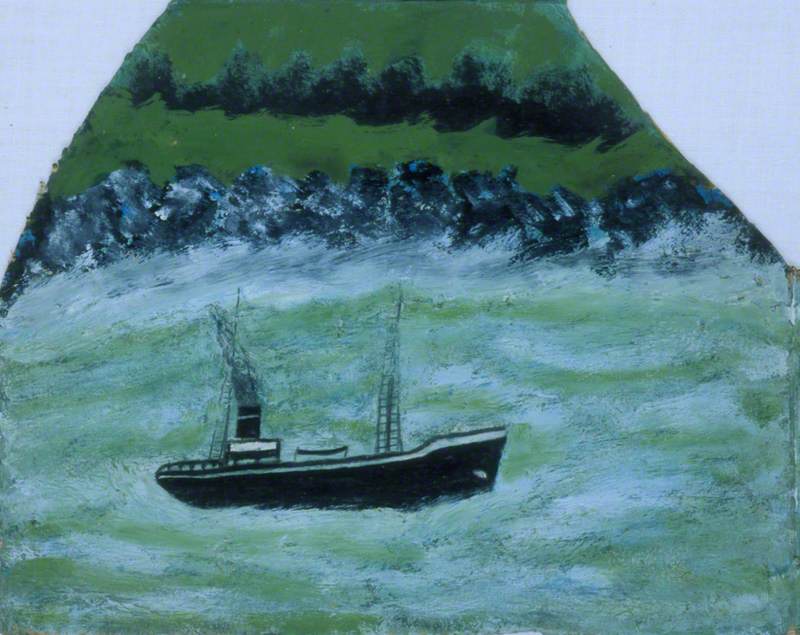Shortly after the ending of the First World War a group of accomplished artists most notably Geoffrey Baker, Head of the Bournemouth Municipal College of Art; Eustace Nash and Leslie Ward formed the Bournemouth Arts Club (BAC) to support and promote art and artists in the area. They invited leading contemporary artists to join them in exhibitions and events.
Guest curator Dr Gill Clarke has drawn some of the finest twentieth century British Art from our collection and others to reveal fascinating insights into how the Club flourished, responded to radical ideas and changing approaches in art. Alongside work by well-known BAC members are works by internationally acclaimed artists such as Michael Rothenstein, John Nash and Henry Lamb.
-
Spray
Spray 1939Harold Williamson was a member of Bournemouth Arts Club when Painting Master at Bournemouth School of Art from 1926 to 1947. He served in various capacities on the Club committee including the hanging committee and during the 1942 exhibition gave a lecture on ‘Some Factors influencing Present Day Painting’.
Spray was purchased at the Royal Academy in 1940, by the Russell-Cotes curator Norman Silvester for £50 (approx. £2,000). Silvester thought him an excellent draughtsman. Williamson’s students also admired his skill at life drawing and knowledge of anatomy, as ably demonstrated in Spray with the precise modelling of the swimmer’s back as she avoids the spray thrown up by a gentle swell.
Harold Williamson (1898–1972)
Oil on canvas
H 60.5 x W 85.8 cm
Russell-Cotes Art Gallery & Museum
-
Poster Design for the Russell-Cotes Art Gallery & Museum
Poster Design for the Russell-Cotes Art Gallery & Museum 1922Arthur Bell showed an early talent for drawing, becoming a pupil in an architectural practice in Kettering. During the First World War he held an Army commission, being wounded on the Somme. Post-war convalescence at the converted Mont Dore Hotel (now Bournemouth Town Hall) gave him the opportunity to study at Bournemouth Municipal College of Art, under Geoffrey Baker and Leslie Ward, whose pictorial design classes had a lasting impact. Bell was an early member of the Bournemouth Arts Club.
Bell’s poster, commissioned by the Russell-Cotes Museum for its grand opening, shows the front of the building with the statue The Bathers by Edward Bowring Stephens (1815-1882).
Arthur Bell (1897–1995)
Gouache on paper on card
H 34.6 x W 65.7 cm
Russell-Cotes Art Gallery & Museum
-
Boats on the Medway, Kent
Boats on the Medway, KentThis tranquil scene looks towards All Saints Church, Wouldham in West Kent with the parched, orange Downs in the background. Painted when Geoffrey Baker was Headmaster of the Art School within the Municipal College in Bournemouth, a post he held from 1913-1947; it was an area he knew well, being born some 20 miles away in Faversham.
A founding member of Bournemouth Arts Club, Baker is credited with the idea of forming a local arts club. In the 1920s he regularly attended the fortnightly life drawing evenings for members alongside Leslie Ward, Arthur Bell, Arthur Bradbury and Eustace Nash whose work can be seen in this exhibition. Baker remained in Dorset, living in Stanpit, near Christchurch until his death.
Geoffrey Alan Baker (1881–1959)
Oil on canvas
H 41.5 x W 61.6 cm
Russell-Cotes Art Gallery & Museum
-
A White Gale off the Coast of Cornwall
A White Gale off the Coast of Cornwall 1890sLaurits (or Lauritz) Holst established an international reputation as a marine painter. Born in Denmark he studied at the Copenhagen Academy before moving to England in 1873. In 1896 he settled in Bournemouth where his studio overlooked Alum Chine continuing to work on seascapes from around the world which were often exhibited at the Royal Academy.
This work is perhaps one of his finest with its high horizon and ear monochrome palette revealing Holst’s ability to capture the dramatic energy of the sea. Hung at the Club’s exhibition in 1929, he had exhibited from 1923, it was gifted to the Russell-Cotes Museum by his wife Josephine in 1932 when his health was failing.
Laurits Bernhard Holst (1848–1934)
Oil on canvas
H 36.5 x W 59.5 cm
Russell-Cotes Art Gallery & Museum
-
The Newsboy
The NewsboyHenry Mawdsley studied at the Royal College of Art under Gerald Moira (1867-1959) in the School of Painting and Drawing where he was encouraged to take an interest in decorative painting. Known for his portraits Mawdsley first exhibited at the Royal Academy in 1925 and, from 1941 until his death in 1946, with the Bournemouth Arts Club serving on the committee and selection committee.
This painting records agricultural workers buying their newspaper from a young boy and may have been inspired by visits to France. It was purchased from his wife, Mrs Edith Mary Mawdsley (née Varley), in 1946. An artist and teacher she studied in Huddersfield and Paris and exhibited with the Club in the 1940s.
Henry Mawdsley (1878–1937)
Oil on canvas
H 65.8 x W 76.5 cm
Russell-Cotes Art Gallery & Museum
-
The Dredgers, Bristol Docks
The Dredgers, Bristol Docks c.1924John Nash, younger brother of Paul Nash (1889-1946) worked initially as a journalist. However, encouraged by Paul, he turned to art, remaining entirely self-taught. Dredgers was completed whilst Nash was teaching at the Ruskin School, Oxford. He made his drawings ‘en plein air’, working them up in his studio, to produce stunning works, such as this example. Dredgers, with its restricted palette, displays his growing interest in Cubism.
Nash featured in Bournemouth Arts Club’s landmark and largest exhibition in 1937 which featured work by other well-known contemporary artists loaned by London Galleries including Mark Gertler, Wyndham Lewis, Picasso, and Matisse. Bournemouth’s Municipal College was the exhibition venue, another first.
John Northcote Nash (1893–1977)
Oil on canvas
H 66.7 x W 85 cm
Swindon Museum and Art Gallery
-
Miss Chaseley on the Undercliff
Miss Chaseley on the Undercliff 1927Maxwell Armfield was included in a list of artists to be invited to join Bournemouth Arts Club at the outset. He appears not to have taken up the invitation or, conceivably, was not included when numbers were reduced from 60 to 30.
Miss Chaseley on the Undercliff featured in an 'Exhibition of Works in Tempera by Prominent Living Artists' at the Russell-Cotes in 1937 and was purchased for 40 guineas (approx. £3,000) from Armfield. He was furious to learn that the press misinterpreted his painting of his Boscombe landlady set against a synthesized backdrop of the modern Bournemouth West Cliff as an attack on ‘old ladies of the Town’. Armfield said he had chosen her solely because ‘she was so typical of a period’.
Maxwell Ashby Armfield (1881–1972)
Tempera on paper
H 48.8 x W 98.5 cm
Russell-Cotes Art Gallery & Museum
-
Bournemouth Pier
Margaret Wilson’s charming etching shows a section of Bournemouth Pier from the promenade. Wilson first encountered Bournemouth as a child on family holidays and later delighted in recording the town’s bustling coastline.
From 1946, Wilson was Head of Art at Talbot Heath School, Bournemouth, which was founded in 1886. She took several pupils in December 1963 to hear David Hockney speak on Painting in the Sixties part of the ‘Art in Our Time’ lectures hosted by Bournemouth Arts Club. Wilson retired in 1969 and exhibited with the Club from 1977 until her death in 1985.

-
Hail and Farewell
Frederick Mager studied at Southampton School of Art from 1927-1931 joining Bournemouth Arts Club in 1933 and was Treasurer from 1934-1941. He previously worked as a civil engineer.
Hail and Farewell was presented to the Russell-Cotes Museum by Bournemouth Arts Club in 1941, in gratitude for hosting its annual exhibition, together with a loan exhibition of war art. It portrays a corner of Southampton Docks with the ocean liner Mauretania in the background awaiting scrapping having been ‘retired’ in 1934 by Cunard White Star Line. Despite radiating sunlight there is a note of sadness at the passing of an age of luxury travel.

-
Chalk Cliffs near Swanage
Chalk Cliffs near Swanage 1931Well-known local painter and printmaker Leslie Ward was a founding and pivotal member of Bournemouth Arts Club. He won a scholarship to Drummond Road Art School in Bournemouth in 1903 and studied at the Royal Academy Schools. He was an influential teacher at the new Bournemouth Municipal College School of Art (which absorbed Drummond Road) from 1913 becoming Head of the Department of Pictorial Design until retiring in 1953.
His deftly executed watercolour depicts the two chalk formations known as ‘The Pinnacles’ east of Studland with ‘Old Harry Rocks’ just visible behind on an idyllic summer’s day. The distant yachts and Bournemouth pleasure steamer on the calm Mediterranean-blue sea demonstrate his powerful use of colour.
Philip Leslie Moffat Ward (1888–1978)
Watercolour on paper
H 48.7 x W 35.6 cm
Russell-Cotes Art Gallery & Museum
-
Rye
Agnes Rudd may have been instrumental in the founding of Bournemouth Arts Club, serving on the committee from 1921 and exhibiting regularly from the inaugural exhibition in 1922 when she was on the hanging committee. Critic W.J. Day described her as ‘one of our clever lady artists’ who ‘shows us a beautiful technique’.
Rudd delighted in recording the historic town of Rye in East Sussex and showed A Summer’s Day, Rye, at the Royal Academy in 1891. In the 1920s and 1930s she exhibited several views of the Cinque Port with Bournemouth Arts Club, including Rye in 1929, priced at six guineas (approx. £300).

-
Boat on the Sea
Boat on the Sea 1937Bournemouth Arts Club continued to organise loan exhibitions to benefit members and the wider community. In 1950 they presented a Retrospective Exhibition of the works of Alfred Wallis together with a group of paintings by Christopher Wood in the College of Art hung by club stalwart Leslie Ward. It was the first such representative collection.
Wallis was born in Devonport and moved to St Ives in the mid-1880s. Self-taught, he took up painting after his wife’s death in 1922. He painted prolifically in a highly individual style on scrap material using house and yacht-paint. A former fisherman, Wallis painted objects and scenes he knew best not trying to display perspective, the subject being the largest and most important object.
Alfred Wallis (1855–1942)
Oil on card
H 48.6 x W 57.2 cm
Southampton City Art Gallery
-
Breton Woman at Prayer
Breton Woman at Prayer 1930Breton Woman at Prayer was one of the paintings Bournemouth Arts Club included in the Alfred Wallis Retrospective in 1950 to demonstrate the link between Wood’s work and Wallis’s. Wood and Ben Nicholson met Wallis in St Ives in 1928 and admired his ‘primitive’ style. Wood stayed with him for a period and as a result turned to oil-based house paint, restricted his range of colours and modified his compositions.
In June 1930 Wood returned to Brittany, creating over 40 paintings in as many days in his highly individual naïve figurative style as in Breton Woman at Prayer. On 21 August 1930, having returned to England from France and after lunching with his mother and sister, witnesses saw him jump in front of a train at Salisbury station.
Christopher Wood (1901–1930)
Oil on card
H 53.6 x W 64.5 cm
Southampton City Art Gallery
-
Pamela
Pamela 1935Arthur Bradbury was attracted to figure and portrait studies and this painting of his seven year-old daughter shows the influence of John Singer Sargent (1856-1925), the leading portrait painter of his generation and by whom he was taught at the Royal Academy Schools.
Pamela is set against a backdrop of Brownsea Island and Poole Harbour and shows the barquentine ‘Waterwitch’ on which Bradbury sailed as a cadet in the Mercantile Marine on the West African trade route. Sailing ships frequently appear in Bradbury’s work and his sea-going experience made him an authority on sailing vessels. The portrait hung in the family home until bought from Bradbury by the Russell-Cotes Museum in 1945.
Arthur Royce Bradbury (1892–1977)
Tempera on paper
H 38 x W 32 cm
Russell-Cotes Art Gallery & Museum
-
Gypsy Horses
Gypsy Horses 1933–1935Lucy Kemp-Welch was the foremost painter of horses of her generation. They were her favourite subject from an early age when she would go on drawing expeditions in the New Forest from her home in Bournemouth. An expert horsewoman she studied anatomy and physiology at Christchurch Hospital for Sick Horses.
She settled permanently in Bushey, Hertfordshire, running the Herkomer Art School from 1905-1926. Kemp-Welch’s intuitive understanding of horses is evident in her carefully observed Gypsy Horses; it was bought directly from her in 1956 for £145 (approx. £3,500). She exhibited prolifically including with Bournemouth Arts Club by invitation in 1924 and later as a member serving as Vice President from 1929 until her death in 1958.
Lucy Elizabeth Kemp-Welch (1869–1958)
Oil on canvas
H 73 x W 93.5 cm
Russell-Cotes Art Gallery & Museum
-
Chief Engineman P. Smith, RNPS; Stoker I/C A Brazier, RNPS; Stoker I/C A Farrow, in the Engine Room of BYMS 2254
Chief Engineman P. Smith, RNPS; Stoker I/C A Brazier, RNPS; Stoker I/C A Farrow, in the Engine Room of BYMS 2254 1944William Dring has skilfully and sympathetically recorded Royal Naval Patrol Service (RNPS) crew members in the cramped engine room of the British Yard Minesweeper (BYMS) 2254. A full-time salaried war artist he took endless trouble over the many pictures he executed while working for each of the Services and travelling to Scotland, Portsmouth and the Western Approaches.
In 1946, Dring made the short trip from his home in Compton, south of Winchester to give a lecture to Club members entitled Can Art be Modern? He directed a weekend painting school for members in 1957 who benefitted from his previous teaching experience at Southampton School of Art.
William D. Dring (1904–1990)
Chalk & pastel on paper
H 61.5 x W 48.3 cm
Russell-Cotes Art Gallery & Museum
-
The Darkened Bus Station
The Darkened Bus Station 1939–1941The Darkened Bus Station was one of over 150 works shown by members at the War Artists and Bournemouth Arts Club exhibition at the Russell-Cotes from December 1940 to January 1941. Priced at 15 guineas (approx. £700), it was one of only four works sold and despite limited opening and ‘black out’ regulations a record 4,000 people attended.
A prolific commercial artist and lithographer Nash was at his best in watercolours. This painting shows the old Bournemouth bus station at Exeter Road where he would daily catch the No. 2 bus to work. Nash’s interest in capturing the pools of light in the blacked-out interior as well as the people passing through is much in evidence in this detailed and sensitively executed composition.
Eustace Pain Elliott Nash (1886–1969)
Watercolour on paper
H 39 x W 50.2 cm
Russell-Cotes Art Gallery & Museum
-
And on a Bright Day Years Ago One Might Have Beheld a Pleasing Crowd like This, Indulging in the Noble Pastime of Falconry near Corfe Castle in the Beauteous Isle of Purbeck
And on a Bright Day Years Ago One Might Have Beheld a Pleasing Crowd like This, Indulging in the Noble Pastime of Falconry near Corfe Castle in the Beauteous Isle of Purbeck 1940Isabel Saul attended Bournemouth High School for Girls (now Talbot Heath) from 1906-1912, contributing illustrations to the school’s Jubilee Book (1946) (see display case). Highly talented she studied at Bournemouth Municipal College School of Art passing an industrial design examination in illumination.
In 1924 she exhibited by invitation with Bournemouth Arts Club and as a member in the 1930s and 1940s. Saul’s highly detailed work was largely based upon historical subjects when she employed tempera to effect including Corfe Castle in the Beauteous Isle of Purbeck which was exhibited at the Royal Academy in 1940; a hand-coloured etching St Columba was her first work accepted in 1926.
Isabel Florrie Saul (1895–1982)
Tempera on board
H 55.5 x W 63.5 cm
Russell-Cotes Art Gallery & Museum
-
A Midsummer Dream
Florence Winifred Darlington achieved success at the Royal Academy Summer Exhibition when A Midsummer Dream was hung in 1943. Gallery space was reduced due to bomb damage; it hung in the South Rooms where watercolours, oil paintings and miniatures were tightly packed alongside work by well-known tempera exponents Maxwell Armfield (1881-1972) and Eliot Hodgkin (1905-1987).
This small, carefully executed work was given by Bournemouth Arts Club to the Russell-Cotes Museum for holding its 1943 annual exhibition. Darlington exhibited at the Bournemouth Arts Club as a member from 1942-1946.

-
The White Dresser
The White Dresser 1943–1944Michael Rothenstein visited Bournemouth to speak to club members on The Revival of Printmaking as part of the Art in Our Time lecture series in 1960-1961. These lectures ran from 1947 to 1973 and featured invited artists across varied disciplines.
By the 1960s Rothenstein was becoming better known as a print maker and his ability to devise new techniques and imagery increasingly recognised. The White Dresser emanates from a period during the Second World War when he produced work for the Recording Britain scheme. He referred to it as his Neo-Romantic period, the dresser in question or at least elements of it were to be found in his friend painter, designer and teacher Peggy Angus’s (1904-1993) basement kitchen in Primrose Hill, London.
Michael Rothenstein (1908–1993)
Watercolour on paper
H 35.5 x W 45.1 cm
Swindon Museum and Art Gallery
-
Composition
Composition c.1943Jankel Adler’s work was shown in an exhibition of contemporary paintings in collaboration with Bournemouth Arts Club and the Arts Council in 1951. Born in Poland of Jewish descent, he settled in Düsseldorf becoming a friend of Paul Klee (1879-1940) whose work he admired. In 1933 with the rise of Nazism his art was declared ‘degenerate’ and, subject to increasing discrimination, he left Germany.
_Composition _shows Adler’s interest in abstract forms, the small white contorted figure is suggestive of a skeleton in a dark, claustrophobic space. The circular mark resembles a sun or moon, the curved structure could be a painter’s palette. Deliberately obscure it projects a feeling of isolation and tension.
Jankel Adler (1895–1949)
Oil mixed with sand on millboard
H 24 x W 30 cm
Swindon Museum and Art Gallery
-
Sunday at Weymouth
Sunday at Weymouth 1907–1969Eustace Nash undertook the preliminary sketches for Sunday at Weymouth with great enthusiasm on a day trip by train with his young daughter Myrna. He knew the area well having lived and worked most of his life in nearby Bournemouth and Poole.
Crowds returned to the south coast beaches post-Second World War. Paid holidays, increased leisure time, public transport and car ownership brought the seaside within reach of the masses. Nash’s congested beach is the antithesis of the sedate resort which had once flourished under the patronage of George III (1738-1820). The beach is now a children’s playground with donkey rides, a carousel and swing boats to amuse them between building sandcastles and swimming.
Eustace Pain Elliott Nash (1886–1969)
Watercolour on paper
H 38.2 x W 44.5 cm
Russell-Cotes Art Gallery & Museum
-
Marine Still Life
Frank Dodman studied at the Municipal School of Art, Manchester and following various teaching appointments was appointed Head of the Art Teacher Training Department at Bournemouth and Poole College of Art in 1948. During the Second World War he served with the Royal Air Force as an interpreter of air photographs later writing The Observer Book of Ships (1953). His ship identification handbooks were carried on all British ships and submarines and led to a diminishing of incidents of friendly fire and an increase in attacks on enemy shipping.
Dodman exhibited with Bournemouth Arts Club from 1948 until the early 1960s, largely showing watercolours of the locality and places he had visited.

-
Boy Reading
Boy Reading 1956Boy Reading may have been a commission or study, possibly of Henry Lamb’s son Valentine (1939-2015). Lamb enjoyed capturing children’s likenesses and often painted his sitters reading, perhaps in an effort to keep them occupied.
Lamb was greatly supportive of local artists and was Bournemouth Arts Club President for 25 years, contributing many paintings to exhibitions between 1935-1960. His association with the Club went back to its early days as Lamb
while living in Poole attended the life drawing classes in Eustace Nash’s studio and on occasion would offer ‘criticism’ on members’ work.
Boy Reading was loaned by Lamb’s wife Lady Pansy to Bournemouth Arts Club for exhibition in 1960
shortly after Lamb’s death.
Henry Lamb (1883–1960)
Oil on canvas
H 39.3 x W 49.6 cm
Russell-Cotes Art Gallery & Museum
-
Ruined Lighthouse, Portland
Ruined Lighthouse, PortlandBuilt in the nineteenth century The Old Lower Lighthouse on the Isle of Portland in Leslie Ward’s beloved Dorset was the subject of his assured watercolour in 1964 when he was in his 70s.
Ward’s composition employs a degree of artistic license with the dilapidated appearance of the building, as in 1961 it was revamped and opened as a Bird Observatory and Field Centre. Ward resigned from the Bournemouth Arts Club
committee in 1975 citing his advancing years although he remained a Club member.
Philip Leslie Moffat Ward (1888–1978)
Watercolour on paper
H 28.4 x W 35.2 cm
Russell-Cotes Art Gallery & Museum
-
The Orphans
The OrphansJoy Parsons trained at the Royal College of Art and was a longstanding member of Bournemouth Arts Club joining in 1947. Her favourite medium was watercolour and living on a houseboat on the River Avon, Christchurch she would stretch the paper in the river.
Parsons wrote for Leisure Painter and published several books including A Dorset Artist’s New Forest Sketchbook (2004). She was a member of the Society of Wildlife Artists.
Joy Parsons (c.1914–2012)
Acrylic on paper
H 35.7 x W 48.2 cm
Russell-Cotes Art Gallery & Museum
-
Sea Nymph
Sea Nymph 1973In Greek mythology sea nymphs were female spirits of the sea considered to be protectors to sailors and fishermen. They represented various facets of the sea including foam, sand, waves and currents. Jenny Surridge’s painting resulted from a weekend painting school taken by Fred Sinkinson, later Club President, when members were encouraged to use marble dust and undercoat as a base with oil paint glazes on top.
Surridge served on the Club committee in the 1970s and 1980s including the selection committee. She was made an Honorary Member in 2017 in recognition of her contribution to the Club over fifty plus years. During that time, she has taught, lectured and exhibited widely including on a number of occasions at the Royal Academy.
Jennifer Mary Surridge (b.1933)
Oil on board
H 60.7 x W 59.3 cm
Russell-Cotes Art Gallery & Museum
-
The Studio Reflected
The Studio ReflectedPriscilla Sorapure was an admirer of the Austrian symbolist painter Klimt (1862-1918) and his protégé Egon Schiele (1890-1918), a major figurative painter. The bright colour and expressive lines of The Studio Reflected has echoes
of the features of Schiele’s work.
Sorapure completed the painting while studying for a Diploma in Fine Art at Southampton College of Higher Education. She was a regular exhibitor with Bournemouth Arts Club from the mid-1980s, later moving to and exhibiting with the Clifton Arts Club, Bristol.
Priscilla Sorapure (b.1937)
Oil on canvas
H 60.5 x W 64.6 cm
Russell-Cotes Art Gallery & Museum
-
Sea and Sky Triptych No. 2
Sea and Sky Triptych No. 2 1991Moving to Bournemouth in 1988 Martyn Brewster found himself inspired by the changing light and different forms of Dorset’s dramatic coastal landscape resulting in many abstract series. Sea and Sky Triptych No. 2 reveals too his fascination with the expressive qualities particularly of oil paint. Central to his work is his interest in colour and abstraction with what he describes as ‘a lyrical and poetic response to both nature and the medium’.
Brewster has exhibited widely including a solo show at the Russell-Cotes. He was invited to become a Friend of Bournemouth Arts Club in 2002 joining a small group of much respected and well-known local artists.
Martyn Robert Brewster (b.1952)
Oil on canvas
H 183 x W 152.5 cm
Russell-Cotes Art Gallery & Museum
Explore artists in this Curation
View all 22-
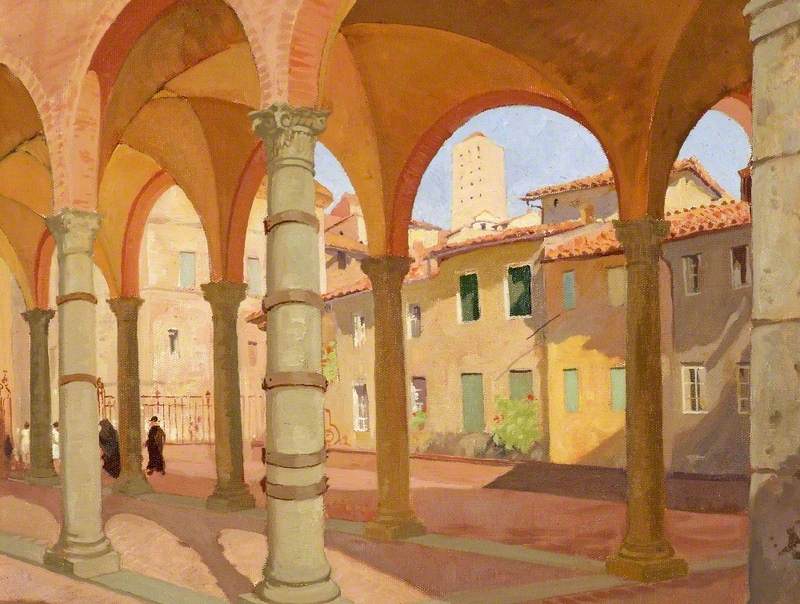 Arthur Bell (1897–1995)
Arthur Bell (1897–1995) -
 Lucy Elizabeth Kemp-Welch (1869–1958)
Lucy Elizabeth Kemp-Welch (1869–1958) -
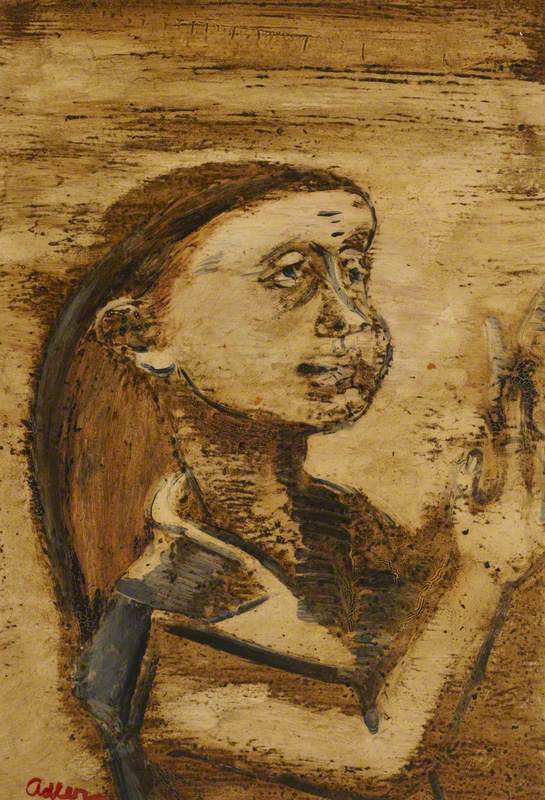 Jankel Adler (1895–1949)
Jankel Adler (1895–1949) -
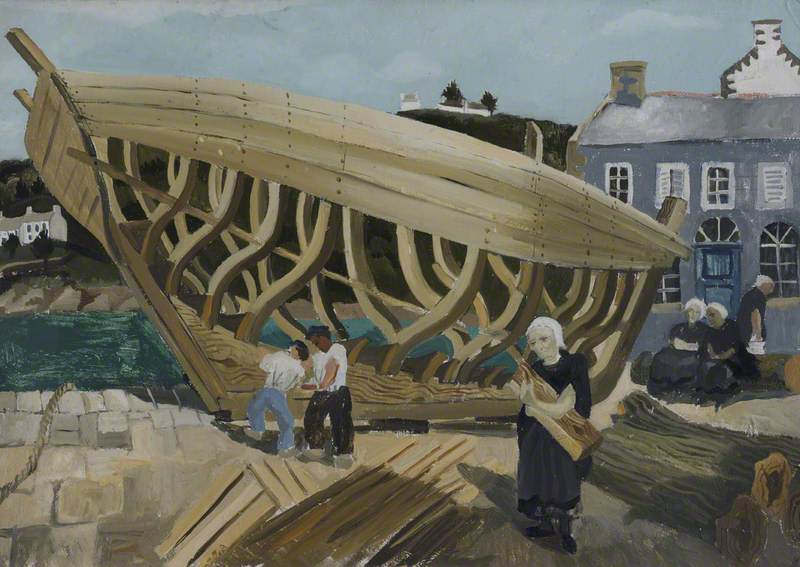 Christopher Wood (1901–1930)
Christopher Wood (1901–1930) -
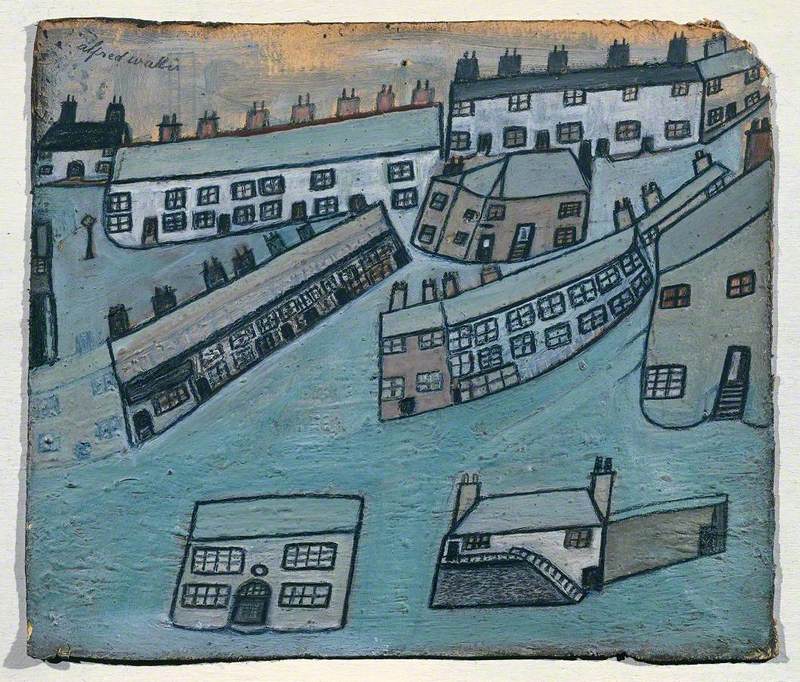 Alfred Wallis (1855–1942)
Alfred Wallis (1855–1942) -
 Jennifer Mary Surridge (b.1933)
Jennifer Mary Surridge (b.1933) -
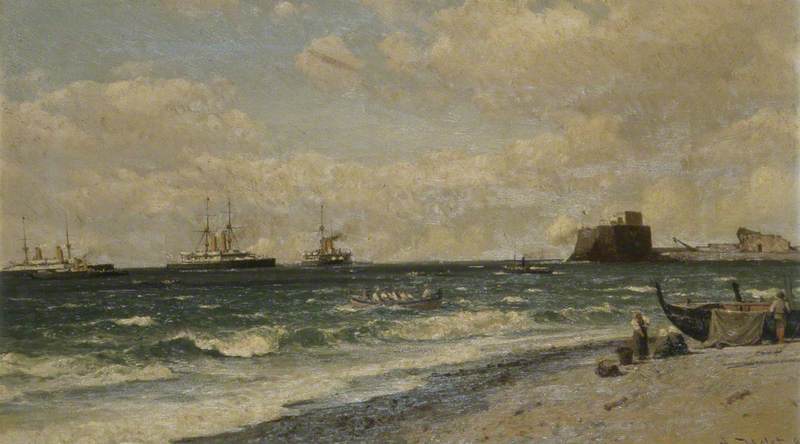 Laurits Bernhard Holst (1848–1934)
Laurits Bernhard Holst (1848–1934) -
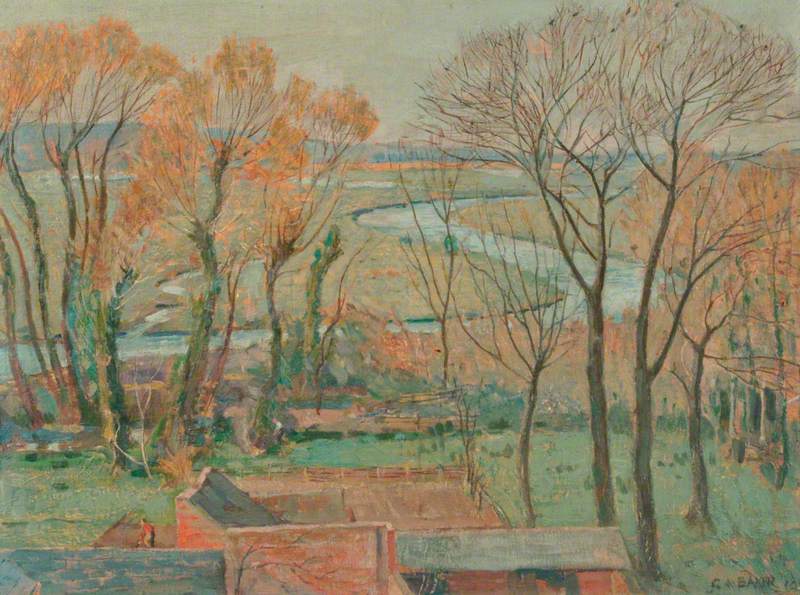 Geoffrey Alan Baker (1881–1959)
Geoffrey Alan Baker (1881–1959) -
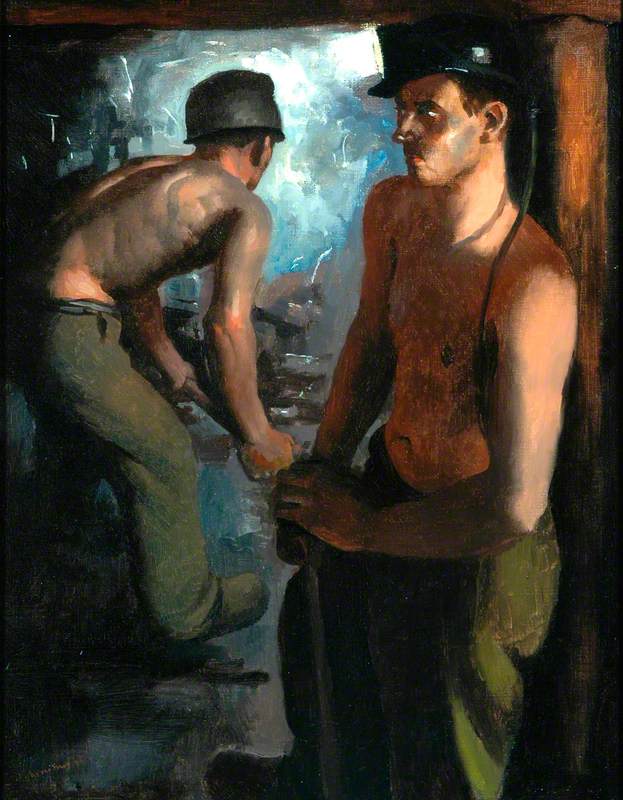 William D. Dring (1904–1990)
William D. Dring (1904–1990) -
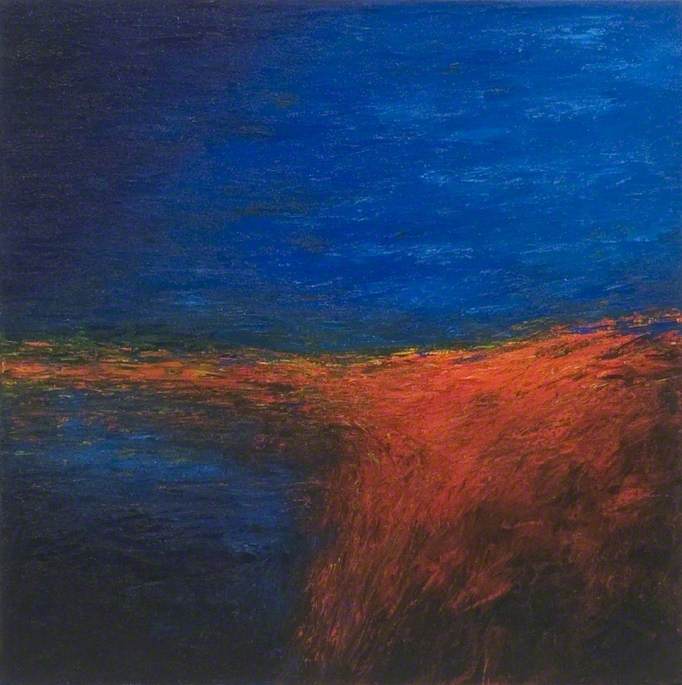 Martyn Robert Brewster (b.1952)
Martyn Robert Brewster (b.1952) - View all 22
